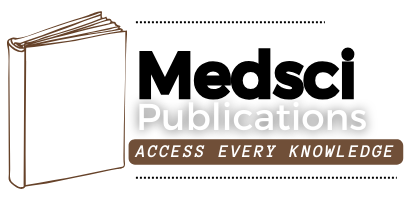Comparison of Airway Ultrasound and Conventional Methods in Airway Management: Effectiveness and Temporal Efficiency in Traumatic Patients in Emergency Department
DOI:
https://doi.org/10.55489/njmr.150220251068Keywords:
Airway Ultrasound (AUS), Airway Management, Trauma Patients, Emergency DepartmentAbstract
Introduction: Effective airway management is critical in trauma care, particularly in the emergency department (ED), where rapid decisions impact outcomes. While conventional methods like auscultation and capnography are widely used for endotracheal tube (ETT) confirmation, their limitations highlight the need for Airway Ultrasound (AUS), offering real-time imaging and enhanced accuracy in trauma patients.
Method: This prospective, single-center study was conducted in the ED of a tertiary care hospital to compare AUS and standard clinical assessment (SCA) for confirming ETT placement during Rapid Sequence Intubation (RSI) in adult trauma patients. Patients were randomized into AUS or SCA groups. Primary outcomes included success rates, number of intubation attempts, and confirmation time and adverse events, including esophageal intubation and hypoxemia.
Result: The AUS arm showed higher overall success (100% vs. 96%) and first-attempt success rates (94% vs. 76%) and required fewer attempts (1.06 ± 0.2 vs. 1.22 ± 0.5). Time metrics significantly favored AUS, with faster intubation (8.9 vs. 13.1 seconds) and confirmation (45 vs. 91.4 seconds). Esophageal intubation was significantly less frequent with AUS (6% vs. 18%, p = 0.042).
Conclusion: AUS is a transformative tool in trauma airway management, improving visualization, accuracy, efficiency, and safety. With advancing technology, integrating AUS, standardized protocols, and training will solidify its role in trauma care, ensuring safer and more effective outcomes in emergency medicine.
References
1. Brown CVR, Inaba K, Shatz DV, et al. Western Trauma Association critical decisions in trauma: airway management in adult trauma patients. Trauma Surg Acute Care Open. 2020;5(1):e000539. DOI: https://doi.org/10.1136/tsaco-2020-000539 PMid:33083558 PMCid:PMC7549454 DOI: https://doi.org/10.1136/tsaco-2020-000539
2. Stewart JC, Bhananker S, Ramaiah R. Rapid-sequence intubation and cricoid pressure. Int J Crit IllnInj Sci. 2014;4(1):42-9. DOI: https://doi.org/10.4103/2229-5151.128012 PMid:24741497 PMCid:PMC3982370 DOI: https://doi.org/10.4103/2229-5151.128012
3. Warner KJ, Cuschieri J, Garland B, et al. The utility of early end-tidal capnography in monitoring ventilation status after severe injury. J Trauma. 2009;66(1):26-31. DOI: https://doi.org/10.1097/TA.0b013e3181957a25 PMid:19131802 DOI: https://doi.org/10.1097/TA.0b013e3181957a25
4. Lin J, Bellinger R, Shedd A, et al. Point-of-Care Ultrasound in Airway Evaluation and Management: A Comprehensive Review. Diagnostics. 2023;13(9):1541. DOI: https://doi.org/10.3390/diagnostics13091541 PMid:37174933 PMCid:PMC10177245 DOI: https://doi.org/10.3390/diagnostics13091541
5. Chelikam N, Vyas A, Desai R, et al. Past and Present of Point-of-Care Ultrasound (PoCUS): A Narrative Review. Cureus. 2023;15(12):e50155. DOI: https://doi.org/10.7759/cureus.50155 PMid:38192958 PMCid:PMC10771967 DOI: https://doi.org/10.7759/cureus.50155
6. Gottlieb M, O'Brien JR, Ferrigno N, Sundaram T. Point-of-care ultrasound for airway management in the emergency and critical care setting. Clin Exp Emerg Med. 2024;11(1):22-32. DOI: https://doi.org/10.15441/ceem.23.094 PMid:37620036 PMCid:PMC11009714 DOI: https://doi.org/10.15441/ceem.23.094
7. Wu MY, Yiang GT, Ke JY, Chen CS, Lin PC, Chen YL. Role of Trachway versus Conventional Modes of Intubation in Difficult Airway Management in COVID-19 Setups. Emerg Med Int. 2021;25:6614523. DOI: https://doi.org/10.1155/2021/6614523 PMid:33728067 PMCid:PMC7910513 DOI: https://doi.org/10.1155/2021/6614523
8. Wang SY, Xue FS, Liu YY. Comparing ultrasound-guided and fiberscope-guided intubation. J Anesth. 2018;32(1):147. DOI: https://doi.org/10.1007/s00540-017-2421-4 PMid:29094208 DOI: https://doi.org/10.1007/s00540-017-2421-4
9. Tian Y, Fei Y, Bai B, et al. Developing a magnetic POCUS-guided bronchoscope for patients with suspected difficult endotracheal intubation in a general tertiary hospital: protocol for a randomised controlled study. BMJ Open. 2023;13(6):e071325. DOI: https://doi.org/10.1136/bmjopen-2022-071325 PMid:37369409 PMCid:PMC10410925 DOI: https://doi.org/10.1136/bmjopen-2022-071325
10. Neethirajan SGR, Baskar G, Parameswari A. Focus on POCUS: Identification of Early Successful Intubation by Point-of-Care Ultrasound Versus End-Tidal Carbon Dioxide: A Prospective Comparative Study. Turk J AnaesthesiolReanim. 2024;52(6):240-246. DOI: https://doi.org/10.4274/TJAR.2024.241720 PMid:39679752 PMCid:PMC11650097 DOI: https://doi.org/10.4274/TJAR.2024.241720
11. Choi W, Cho YS, Ha YR, et al. Role of point-of-care ultrasound in critical care and emergency medicine: update and future perspective. Clin Exp Emerg Med. 2023;10(4):363-381. DOI: https://doi.org/10.15441/ceem.23.101 PMid:38225778 PMCid:PMC10790072 DOI: https://doi.org/10.15441/ceem.23.101
12. Alenazi A, Alshibani A. Confirmatory methods for endotracheal tube placement in out-of-hospital settings: A systematic review of the literature. Heliyon. 2024;10(7):e28479. DOI: https://doi.org/10.1016/j.heliyon.2024.e28479 PMid:38586363 PMCid:PMC10998048 DOI: https://doi.org/10.1016/j.heliyon.2024.e28479
13. Smallwood N, Dachsel M. Point-of-care ultrasound (POCUS): unnecessary gadgetry or evidence-based medicine? Clin Med (Lond). 2018;18(3):219-224. DOI: https://doi.org/10.7861/clinmedicine.18-3-219 PMid:29858431 PMCid:PMC6334078 DOI: https://doi.org/10.7861/clinmedicine.18-3-219
14. Quinn AC, Sinert R. What is the utility of the Focused Assessment with Sonography in Trauma (FAST) exam in penetrating torso trauma? Injury. 2011;42(5):482-7. DOI: https://doi.org/10.1016/j.injury.2010.07.249 PMid:20701908 DOI: https://doi.org/10.1016/j.injury.2010.07.249
15. Al-Absi DT, Simsekler MCE, Omar MA, et al. Evaluation of point-of-care ultrasound training among healthcare providers: a pilot study. Ultrasound J. 2024;16(1):12. DOI: https://doi.org/10.1186/s13089-023-00350-5 PMid:38383673 PMCid:PMC10881927 DOI: https://doi.org/10.1186/s13089-023-00350-5
16. Gilbertson EA, Hatton ND, Ryan JJ. Point of care ultrasound: the next evolution of medical education. Ann Transl Med. 2020;8(14):846. DOI: https://doi.org/10.21037/atm.2020.04.41 PMid:32793690 PMCid:PMC7396781 DOI: https://doi.org/10.21037/atm.2020.04.41
17. Park SH. Artificial intelligence for ultrasonography: unique opportunities and challenges. Ultrasonography. 2021;40(1):3-6. DOI: https://doi.org/10.14366/usg.20078 PMid:33227844 PMCid:PMC7758099 DOI: https://doi.org/10.14366/usg.20078
18. Wubineh BZ, Deriba FG, Woldeyohannis MM. Exploring the opportunities and challenges of implementing artificial intelligence in healthcare: A systematic literature review. Urol Oncol. 2024;42(3):48-56. DOI: https://doi.org/10.1016/j.urolonc.2023.11.019 PMid:38101991 DOI: https://doi.org/10.1016/j.urolonc.2023.11.019
Downloads
Published
How to Cite
Issue
Section
License
Copyright (c) 2025 Vijay Kumar SS, Pranup Roshan Quadras, Sofiya Crastha, Anila Jose

This work is licensed under a Creative Commons Attribution-ShareAlike 4.0 International License.
Author/s retain the copyright of their article, with first publication rights granted to Medsci Publications.









